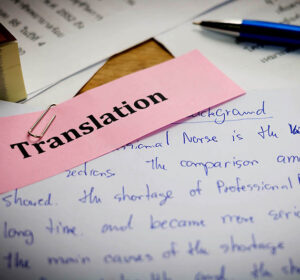
Tips You Must Follow for English into Spanish Document Translation
While a basic translation is not exactly difficult for those who are bilingual, translating a document to a professional level requires a much higher level of language competence than you may at first realize.
Think about this, while a professional writer only needs to be an expert in a single language to produce a document, a translator needs to be an expert in two languages (and often in a relevant industry on top of that) to create a document. A translator needs to be knowledgeable about everything being said so that they can adequately reconvey a message while maintaining proper grammar, punctuation, and verbiage.
Without a deep understanding of the speaker's culture and language, as well as the recipient's culture and language, a great deal can be lost in transition.
In this article, we will go over some basic tips that can help those looking to conduct a translation to get it right the first time.
What to Focus on When you Translate an English into Spanish Document
The following are examples of common pitfalls and mistakes that separate professional translators from those who are simply bilingual and are the aspects one needs to focus on to take their language skills to the next level.
Proofread Extensively
Punctuation, Grammar, and Syntax
Perhaps the most prominent and common mistakes you will see when an inexperienced translator works on a document are punctuation and grammatical errors. There is a great deal of ambiguity when it comes to things like the omission of subject pronouns across various Spanish dialects, and translating these sentences back into English can often cause issues.
This is also the most significant problem when translating a document from English into Spanish, or vice-versa when using machine translation. You need an experienced human who can break down the intended meaning and put it back into the proper order, with the proper punctuation, that the language demands.
Understanding Spanish Is Longer Than English
You also need to keep in mind the formatting and layout of the medium you are working with. A document is less finicky than a marketing deliverable headline, but both require formatting changes during translation. English is more grammatically dense than Spanish, i.e., it says more with fewer syllables. Spanish can often require up to 25% more space.
Capture The Meaning
This may seem obvious, but it is common for a translator to focus so intensely on word usage and grammar that the original meaning of the passage is lost. Without the correct word choice, context, and tempo, the entire meaning of something can change. One or two minor differences can be the divide between an insulting statement or one made in good humor.
A translator needs to, above anything else, ensure that the intention and meaning of what is being said comes across correctly.
Plan Out Your Translation Goal Beforehand
It doesn't matter if it is an official document translation or some other form of document translation service; you need to always understand and plan around the intended goal of a passage. Just like you need to ensure the proper meaning is conveyed, you need to ensure the proper content and formatting are also relayed. There are quite a few steps required in preparing an official translation of a government document.
Understand Your Audience
Another key concern is the formality of the words being used. Spanish requires different levels of formality depending on the country in question, and you will need to be able to navigate this and other cultural issues that will arise when translating passages.
Be Culturally Appropriate
Being culturally appropriate can mean a lot of things, and generally speaking, it means being aware of your audience, how they will interpret something, and if you can avoid causing them any offense by choosing alternative words.
However, there are also less obvious cultural differences between Spanish and other languages that you must be aware of if you want to conduct a proper translation. For example, in U.S. English, most prefer a clear and explicit sentence structure with little ambiguity in the meaning, while Spanish generally operates with more subtle cues and ambiguous phrases. A good translator will be able to navigate these differences to produce something appropriate for the intended audience.
Choose The Right Gendered Words
As most understand, Spanish nouns have genders, which is often confusing and hard to understand for those who only speak English. A translator needs to be aware that while the default gender in Spanish is masculine (and has been for centuries), many brands and personalities are trying to avoid gendered words whenever possible to be more culturally appropriate. Some institutions have since published guidelines to help you avoid or work around sexism in language when you translate a document from English to Spanish or vice-versa.
Choose Right Dialect for Spanish
Spanish is a global language and is often as diverse as the people who use it. You need to be sure that you are using the proper dialect for the intended audience.
Reuse Prior Translation If You Can
Very often, especially with official document translations, you will be retranslating many of the same phrases. Keeping track of past translations can help you save time when working through the same types of passages. Many official document translation services rely on this form of template work in order to generate large amounts of official translation quickly.
Hire a Professional English into Spanish Translation Firm
As you can see, there are quite a few things to consider and obstacles to work around to create a successful translation. Being bilingual is only the beginning of the necessary skills and knowledge. This is why so many small businesses, big businesses, and individuals worldwide rely on translation services to help them get it done right the first time.
Save yourself time and, ultimately, money by having The Spanish Group get your translation done right the first time!

